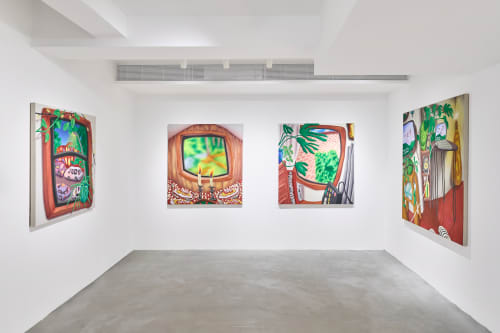WOAW Gallery is pleased to present THE REAL WORLD, Brooklyn-based artist Andrew Englander’s first solo exhibition in Hong Kong, at the gallery’s location at 5 Sun Street, Wan Chai. Featuring 12 works from 9 December to 10 January, 2023 THE REAL WORLD is also WOAW’s debut exhibition with Englander, who joined the gallery program this year.
Taking its title from the reality show first launched in the nineties that follows a group of young adults living together, THE REAL WORLD prompts viewers to consider the absurdity of one making a claim over “the real” while being aware of the impossibility of asserting objectivity—a contemporary paradox of the post-truth era. The name serves as a point of departure for the paintings on view, which are themselves studies of warps in reality, a lens through which to observe a world where perspectives are perpetually in flux.
The paintings of Drew Englander (b. 1985 in Ventura, California) explore solitude in a highly interconnected world, and the necessity of adapting and responding to environmental and psychological developments in our current times. His practice combines digital and analogue methods, first making observational sketches with an iPad then painting with acrylics. Incorporating his daily interactions with digital technology, sports and entertainment, fantasy, virtual reality, and art history, the artist’s works are characterized by bold colors, distorted perspectives, and intricate details that come to life to depict an intimate, surreal, yet familiar world.
The indoor spaces as portrayed by Englander are spellbinding in their asymmetry, foregrounding contorting windows, the spiny tendrils of plants or cables of digital devices, and furniture that swell and protrude into the four corners of a room and the canvas. His works are a gesture towards the imperfect ways we perceive our surroundings and create memories, giving attention to certain details while ignoring others altogether. The domestic scenes in his still-life drawings rarely feature the presence of human beings, yet with their warm tones and vibrancy, they reach out from the relative isolation of their subject matters, and towards commonality and community.

